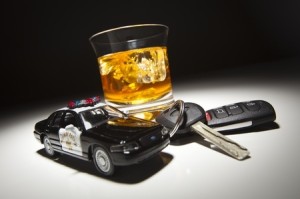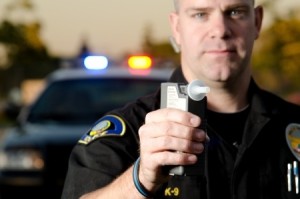
Basics
Alcohol can impair a driver’s ability to perceive and understand traffic and road conditions around them. It also increases the time it takes for them to react to events in the driving environment. This can cause drivers under the influence to engage in dangerous driving behaviors when, for example, they fail to perceive and react properly to a red light or stop sign, enter a controlled intersection when a car or other vehicle has the right-of-way, broadside it and cause an intersection collision. The bottom line is that the risk of causing a car crash rises dramatically as blood alcohol concentration increases.
Data from the National Highway Traffic Safety Administration (NHTSA) underscores the danger. In 2012 over 10,000 people, or almost 1/3 of all people killed in traffic accidents were killed in crashes involving drunk driving. According to other data, in 2011 more than 340,000 people were injured in crashes involving a drunk driver.
Missouri and Kansas data is consistent with the national data. Despite ongoing efforts to reduce drunk driving, accidents caused by drivers under the influence continue to be a problem in both states.  A total of 280 people were killed in Missouri as a result of drunk driving crashes in 2012 – representing 34 percent of all traffic deaths in the state. There were also 2,368 injuries resulting from alcohol-related traffic accidents. In Kansas, 98 people were also killed as a result of drunk driving crashes in the same year, representing 24 percent of the state’s traffic deaths. There were also 1,622 injuries resulting from alcohol-related traffic accidents.
A total of 280 people were killed in Missouri as a result of drunk driving crashes in 2012 – representing 34 percent of all traffic deaths in the state. There were also 2,368 injuries resulting from alcohol-related traffic accidents. In Kansas, 98 people were also killed as a result of drunk driving crashes in the same year, representing 24 percent of the state’s traffic deaths. There were also 1,622 injuries resulting from alcohol-related traffic accidents.
Fortunately, due to a comprehensive drug and alcohol testing program for commercial driver’s license(CDL) holders, the number of truck accidents caused by trucks driven by CDL holders involving a trucker under the influence of alcohol or drugs is very small portion of the overall number of drunk driving crashes. Drivers of cars and other vehicles are responsible for the vast majority of these DUI crashes.
At the Crash Scene
At the car accident scene, a driver under the influence may be observed to have a number of telltale signs. Among these are: the odor of alcohol on breath, bloodshot eyes, slurred speech and lack of coordination. If the officer, based on these and other findings, suspects the driver is under the influence they may administer a “field sobriety test.” The field sobriety test may includes a number of test to evaluate the driver’s coordination, physical and mental functioning.
 The driver may be asked to perform a “walk and turn” test. In this test, the driver is asked to walk heel to toe in a straight line turn in walk back the same way. This test evaluates a driver’s coordination and balance. The driver may be asked to count backwards from 100, recite the alphabet forward or backward, touch their finger to their nose, stand on one leg while holding the other leg and other tests.
The driver may be asked to perform a “walk and turn” test. In this test, the driver is asked to walk heel to toe in a straight line turn in walk back the same way. This test evaluates a driver’s coordination and balance. The driver may be asked to count backwards from 100, recite the alphabet forward or backward, touch their finger to their nose, stand on one leg while holding the other leg and other tests.
If, based on the performance of field sobriety tests and other information, the police officer has probable cause to believe that the driver is under the influence, the driver may be arrested and taken to the police station or a hospital for further testing for the presence and concentration of alcohol in the blood. Because of the potential significance of a driver being of under the influence to a car accident case, as discussed below, your Kansas City car accident lawyer will likely try to obtain evidence concerning the driver’s impairment if there are indications that the at fault driver’s ability to safely operate the vehicle was impaired due to alcohol and/or drugs.
Your DUI Caused Car Crash Case
If you were injured in a car crash caused by a driver under the influence your case may vary in several ways from an ordinary car accident case. First, as the NHTSA statistics above suggest, because a drunk driver is often not fully and control of their faculties or vehicle, there is a good chance that car wreck was more severe than many ordinary car wrecks resulting in more serious injuries like brain injury, spinal cord injury, broken bones, and burns. These injuries may cause long-term physical disability, disfigurement, or impairments.
Another key difference is the drunk drivers’ higher degree of blameworthiness and the damages recoverable. In your ordinary car accident, the crash may be caused by the driver’s brief attention lapse of attention, incorrectly estimating a vehicle speed or a number of other factors. In these cases, you can typically recover what the law calls “compensatory” damages. These are damages to compensate you for past and future medical expenses, pain and suffering, permanent disability, past and future lost income and other losses.
In a drunk driving crash, the responsible driver may be seen to have made a conscious decision to drink and then get behind the wheel. These choices place other people in harm’s way and can be seen by both the law and juries as more blameworthy. In a DUI car crash the responsible driver may be found to be not just negligent, like a driver in your ordinary car crash, but to be more blameworthy having have shown reckless indifference or conscious disregard for the safety of others. In such cases, in addition to compensatory damages you may be able to recover additional “punitive” damages, the purpose of which is to punish and deter this type of conduct.
If you or someone you love was seriously injured, disabled, or killed in a traffic accident caused by a drunk driver, consult with Flick Law Firm as soon as possible. We have successfully been helping people injured in car wrecks since 1993, and will work hard to get you compensated fully and fairly for your auto accident related damages, including medical expenses, property damages, rehabilitation costs, lost wages, and pain and suffering.




